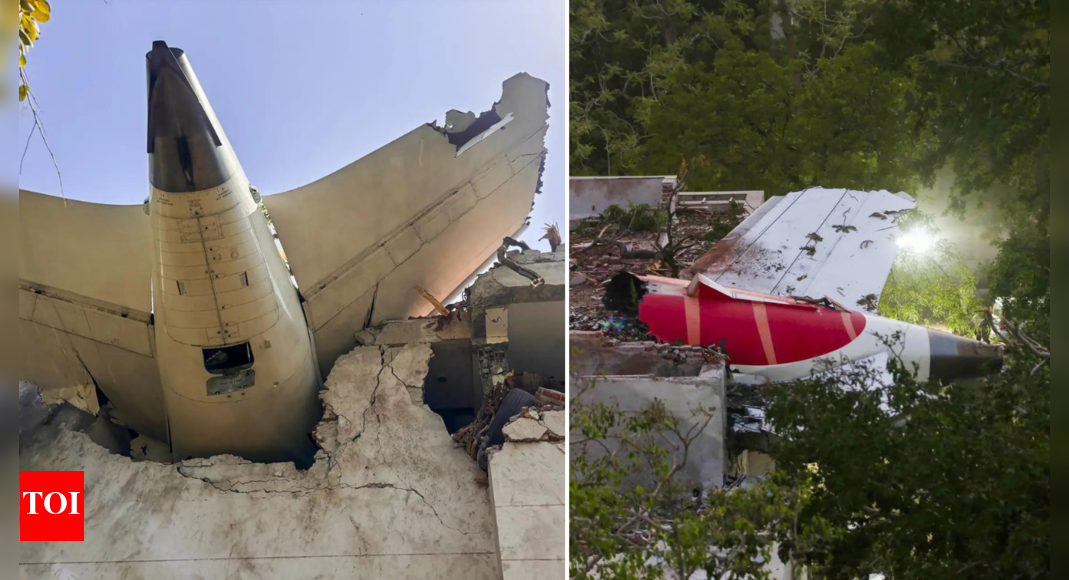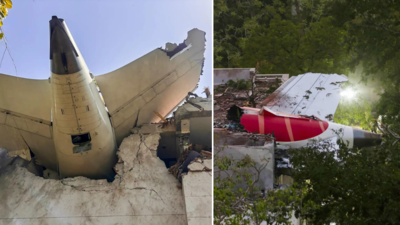Engine 1 and Engine 2 cut off within 1 second: What caused Air India plane crash? 10 key findings from probe report | India News
NEW DELHI: The Aircraft Accident Investigation Bureau (AAIM) Saturday released its preliminary report into the tragic crash of Air India 171 in Ahmedabad on June 12, which claimed 260 lives.The 15-page preliminary report, released a month after tragic crash, details the early findings and current status of the investigation into the crash of Air India Flight AI171, a Boeing 787-8 Dreamliner bound for London Gatwick. The aircraft crashed just moments after takeoff, slamming into a medical hostel complex near the airport. Of the 241 people onboard, only one passenger survived.The report reveals a sequence of events marked by mid-air engine shutdowns, cockpit confusion, and failed recovery attempts just seconds after takeoff.
Here are the key findings from the preliminary investigation report:
- Fuel to both engines cut off mid-air: Just three seconds after liftoff at 08:08:39 UTC, the
fuel cutoff switches for both engines were triggered, one second apart. “The aircraft achieved the maximum recorded airspeed of 180 Knots IAS at about 08:08:42 UTC and immediately thereafter, the Engine 1 and Engine 2 fuel cutoff switches transitioned from RUN to CUTOFF position one after another with a time gap of 01 sec,” the report states.
- Cockpit voice recorder captures pilot confusion: The cockpit voice recording reveals confusion in the final moments. “In the cockpit voice recording, one of the pilots is heard asking the other why did he cutoff. The other pilot responded that he did not do so.” Investigators are looking into whether the switches were triggered manually, inadvertently, or by a system malfunction.
- Relight attempt on engines: The flight data shows that an automatic relight was attempted. Engine 1 briefly responded, but Engine 2 did not recover despite multiple attempts to reintroduce fuel. This failure ultimately made it impossible for the aircraft to maintain thrust.
- Emergency RAT deployment: The Ram Air Turbine (RAT), an emergency power source deployed in response to power failure, activated right after takeoff, a clear indicator of loss of electrical power to critical systems.
Mayday call issued moments before: At 08:09:05 UTC, one of the pilots issued a distress call: “MAYDAY MAYDAY MAYDAY.” The Air Traffic Controller attempted to confirm the call sign but received no further response. Seconds later, the aircraft crashed.
- Aircraft crashed in nose-up attitude: Flight path analysis shows the aircraft hit buildings near BJ Medical College with an 8-degree nose-up pitch and level wings. With no thrust from either engine, the aircraft could not sustain flight.
- Thrust levers found in idle post-crash: Although the thrust levers were in takeoff position during flight, they were found in idle after the crash. Flaps and landing gear were confirmed to be in standard takeoff positions, ruling out abnormal configuration as a factor.
- Wreckage spread across 1,000 feet: The plane disintegrated across a wide zone, hitting multiple buildings. Debris, including engines and landing gear, was scattered over more than 1,000 feet, indicating the force of the impact and trajectory.
- Aircraft airworthy, no fuel control issues logged earlier: The aircraft had valid airworthiness certification. Though there were some minor Category C and D MEL (Minimum Equipment List) issues, none related to fuel control. Notably, no previous issues with fuel cutoff switches had been reported.
- Optional Boeing advisory not followed: While Boeing had issued an optional advisory on fuel control switch locking mechanisms, Air India had not carried out the recommended checks. The aircraft’s throttle control modules had been replaced in 2019 and 2023.
Next steps in investigation
The AAIB report confirms that wreckage analysis, post-mortem reports, and component inspections are ongoing. “At this stage of investigation, there are no recommended actions to B787-8 and/or GE GEnx-1B engine operators and manufacturers,” the agency said.Air India stated it is cooperating fully with the investigation. Boeing, too, said: “We will defer to the AAIB to provide information about AI171, in adherence with the United Nations International Civil Aviation Organization protocol known as Annex 13.”















Post Comment